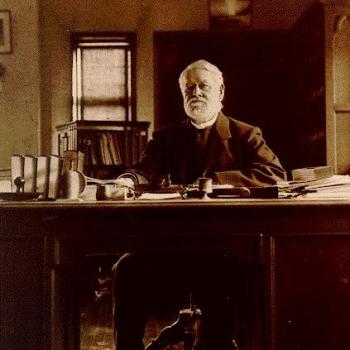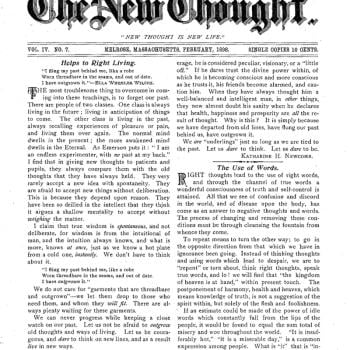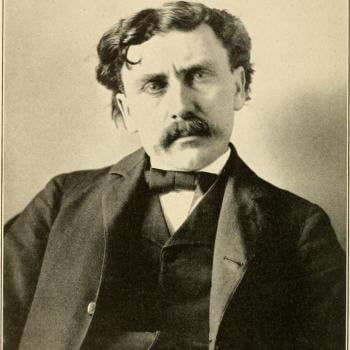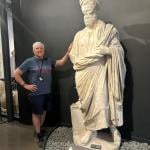When scholars look at the Bible, or any other ancient religious work, they are well used to the idea of traditions and legends building up over time, as stories are retold. The assumption is that, the further we stand from a historical event, the more embellished it becomes, and that is generally a reasonable statement. We pay far less attention to another process at work in making our scriptures, which is that of historical amnesia. Even with a religion like Christianity, with so many scholars over time seeking every little titbit that could possibly pass as historical fact, some truly major phenomena have simply dropped out of sight, and are seemingly beyond recovery. That has to teach us humility about the prospects for ever writing a history of the earliest Christian movement.
As a case in point, I offer the famous list of Christ’s Resurrection appearances from 1 Cor.15: 4-8:
was raised on the third day according to the Scriptures, and that he appeared to Cephas, and then to the Twelve. After that, he appeared to more than five hundred of the brothers and sisters at the same time, most of whom are still living, though some have fallen asleep. Then he appeared to James, then to all the apostles, and last of all he appeared to me also, as to one abnormally born.
The exact chronology here is fairly clear. Paul is writing around 50 AD. The crucifixion occurred around 30, with Paul’s conversion a few years afterwards. All the events described here occurred between 30 and 35.
Let me focus on the appearance to the five hundred. For present purposes, it does not matter whether such an event was historical in the sense of being an actual appearance by the risen Christ. Paul’s statement shows that such an event was believed to have occurred, and that it was widely reported by people to claimed to have participated – certainly dozens, perhaps more. Otherwise, his statement would have been mockingly rejected by anyone who knew the church’s authentic history. Based on what we know about Paul’s contacts with the disciples, he likely heard that story from the apostolic circle when he visited Jerusalem around 38. Arguably, such a listing of witnesses (prior to Paul himself) represented a kind of credal statement used in early preaching.
This appearance must have been a spectacular event, one that cries out to be the climax of some Biblical epic. It could not be reimagined as the mystical insight of a lone believer mulling over the meaning of Jesus’s life. Somehow, we must believe, several hundred people assembled in one place believed they were sharing a vision of the Risen Christ. At the time, that must have represented a major proportion of all the Christian believers on the planet. As to location, it is difficult to imagine it occurring anywhere else than Jerusalem, but one of the provincial cities of Galilee is just possible.
But our uncertainty about location points to an amazing fact, namely that this event is not recorded in the New Testament or the Apostolic Fathers, nor in any alternative Christian sources. Although sometimes identified with the Pentecost scene in Acts 2, the differences between the two are overwhelming. For one thing, that is not a Resurrection appearance. That also takes me back to my original point about how legends grow. I can well imagine how an original story might have told how a group of Spirit-filled apostles preached successfully to large crowds, and that over time this mutated into a colorful legend of a direct appearance by Christ himself. Is it likely, though, that the process might have traveled the other way, that Luke might have purged or toned down an original Resurrection appearance in order to make the Pentecost narrative as we have it? I don’t believe so.
Setting aside that event, the appearance to the five hundred features nowhere in our texts, outside that passing reference in one Pauline letter. Unlike the manifestation to James, it is not (to the best of my knowledge) recounted in any alternative gospel or Gnostic text. For historical purposes, it has ceased to exist.
How could this be? The explanation, of course, is that Paul was writing at a time when Jerusalem still stood as it had in Jesus’s time, and a great many people could still transmit information about what had happened during and after his lifetime. All that changed, catastrophically, after the Jewish war that raged from 66 to 73, which must have eradicated most of those traditions. By the 70s, moreover, most of the first generation of apostles must have died out, and their memories with them. The first written accounts we have of actual Resurrection appearances date only from the 90s, with the stories in Matthew, Luke, and probably John. All were writing after a watershed event that made it extraordinarily difficult to reconstruct much of the church’s earliest history.
If a Resurrection appearance could have slipped from memory, we can only speculate what other events or beliefs have also been lost irretrievably. What other histories died with Jerusalem?












